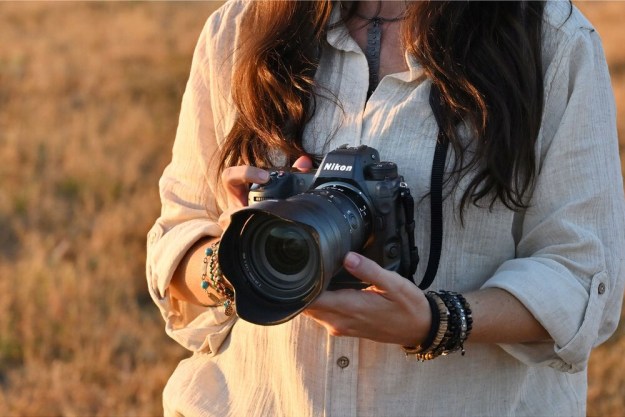Nikon has formally announced eight new Coolpix digital cameras, updating its digital photography line with new units designed to appeal to first-time digital camera buyers, experienced picture-takers looking for new useful features, and even pro-sumers looking for advanced functions.
At the introductory level, the new Coolpix L-series cameras are designed to be affordable while offering a solid set of features. The Coolpix L10 offers a 5 megapixel resolution and a 2-inch LCD viewfinder, while the L11 goes up to 6 megapixels and a 2.4-inch LCD viewfinder, and the L12 manages 7.1 megapixel resolution and sports a 2.5-inch LCD. All three L-series cameras offer 3&timex; optical zoom, sport “impressive” battery life, and have enhanced sensitivity down to ISO 800 for low-light shots. The L12 offers Optical VR image stabilization; the L11 and L10 will have to get by with just your steady nerves. The L-series Coolpix cameras should hit stores this March with suggested prices of $119.95 for the L10, $149.95 for the L11, and $199.95 for the L12.
Nikons’ four new S-series Coolpix cameras fall into two groups: slim and stylish and “classic” designs with more features. The Coolpix S50 and S50c offer a slim wave surface design, 7.2 megapixel resolution, 3-inch LCD viewfinders, and a 3× optical zoom with Optical V Image Stabilization to make sure your images are blur-free even after your third cup of coffee. The S50c also offers Coolpix Connect 2, a Wi-Fi-based connectivity feature which enables users to share pictures with family, friends, and even Web sites by sending images directly from the camera via email: just find yourself a wireless hotspot and you’re good to go. Nikon offers S50c customers up to 2 GB of photo storage on Nikon servers for use as backup or a way to clear off SD cards when snapping pictures on the go. The S50 will carry a suggested price of $299.95, and the S50c will be priced at $249.95; both should be available in April 2007.
Meanwhile, the new Coolpix S200 and S500 pack a little more unfashionable girth in their (respectively) aluminum and stainless steel bodies, but might interest photo enthusiasts looking for affordable features. Both offer 7.1 megapixel resolutions, 2.5-inch LCDs, and a 3× optical zooms; the S200 offers Nikon’s Electronic Vibration Reduction (e-VR) Image Stabilization, while the S500 opts for Nikon’s Optical VR Image Stabilization. The S500 also sports an Anti-Shake button on top of the camera which activates ISO sensitivity (up to ISO 2000), image stabilization, and the camera’s Best Shot Selector for clear results in low light or telephoto zoom settings. The S200 and S500 should hit retailers in March, 2007, at suggested prices of $249.95 and $299.95, respectively.
Finally, the Nikon Coolpix P5000 offers advanced features designed to appeal to serious digital camera buffs and even prosumer shooters. The P5000 offers a 10 megapixel resolution, 3.5× optical zoom, and an “incredibly bright” 2.5-inch LCD viewfinder. The P5000 sports a new image processing engine, and a new mode dial offers fast access to 16 scene modes, seven movie modes, an Anti-Shake mode, and a high sensitivity mode. The Anti-Shake mode also kicks in high sensitivity (up to ISO 3200) and the camera’s Best Shot Selector; the mode dial also provides access to Programmed Auto, Shutter-Priority Audio, Aperture Priority Auto, and Manual (P/S/A/M) exposure modes. Need more? Wide-angle and telephoto lens converters are available, and a built-in accessory shoe supports Nikon’s i-TTL flash control for external flashes, including the SB400/600/800 Speedlights. The P5000 will be available this March at a suggested price of $399.95.
[We’d love to be able to link to each camera individually, but Nikon’s Flash-based camera site makes it impossible…sorry.]
Editors' Recommendations
- How to photograph April’s solar eclipse, according to Nikon
- Nikon sale: Get up to $700 off select Nikon cameras and lenses
- New Nikon camera gear for space station marks end of an era
- Fujifilm’s new Instax Pal camera is fun, but pricey
- Vloggers, Nikon has built a new camera just for you


